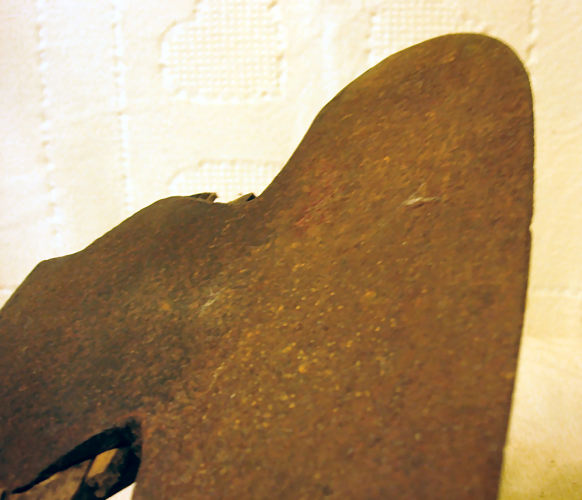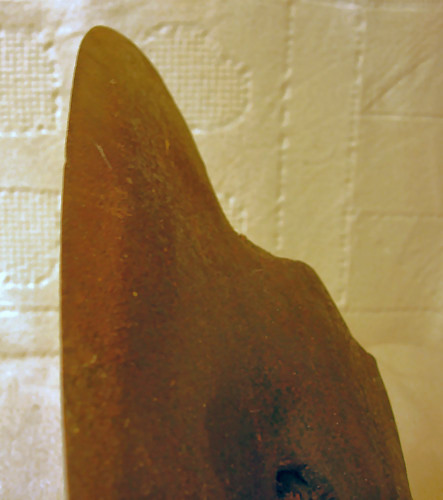

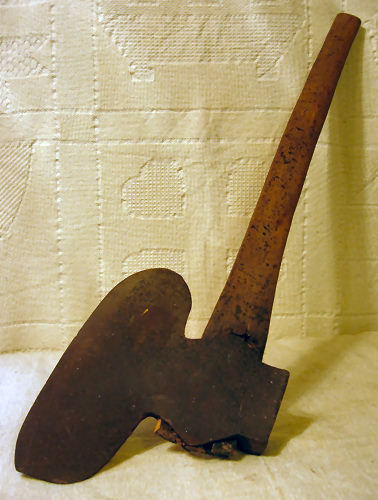
| This item is a broad ax. More particularly, it is a chisel-edged broad ax. This means that its blade edge is flat on one side, and beveled on the opposite. The broad ax is easily identified and distinguished from the felling ax by its telltale curved or bent handle. I purchased this ax from a local antiques dealer, and when I was looking at it and making my decision to buy it, he commented to me that he had intended, but never got around, to "fix" it by replacing the handle with a proper, straight one. I was happy that he didn't know what he had, or he might have charged more for it than he did. |
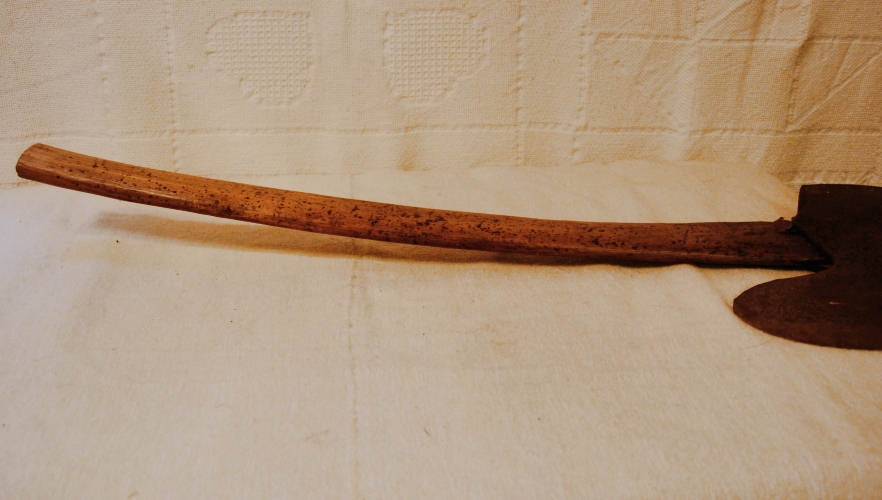
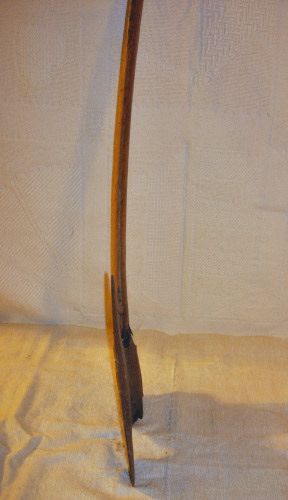
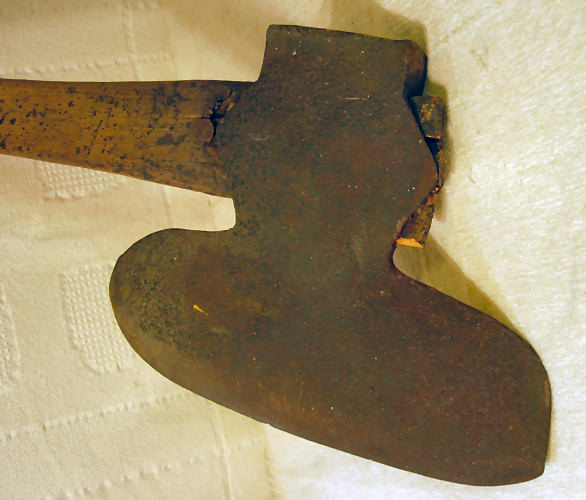
| The two images below show how the blade of a chisel-edged broad ax is beveled on only one side. Chisel-Edged Broad Axes, in general, were made for right handed users. This meant that when you grasped the handle and held the ax directly in front of you, with the poll aimed upward, the bevel would be on the right side. The handle, also, would bend toward the right. The handle was bent or curved because the user, a housewright (more commonly called a hewer), would have stood beside the log to surface it. The log was usually raised above the ground by placing its ends on two other logs which lay on the ground. The additional height made it easier for the hewer to work on the log because he wouldn't have to bend over so much. He would start by standing on the log and roughly squaring the round log with a felling ax. Then, when he had four somewhat straight, flat sides to the log, the hewer would "stand down", that is he would step off of the log and stand on the ground alongside the log. Using the broad ax, he would slice off the rough spots and make the surface smooth. (The stereotyped idea that a log beam that is 'typical' of colonial work has gouge marks all along its length made by the felling ax, is simply not accurate. The hewer, using the broad ax, would try to, and often succeed in removing all of the marks left by the felling ax.) Because the hewer would stand on the ground beside the log, the handle of the broad ax was bent to accomodate the position in which he had to work so that he would not hit his knuckles with each swing. As Henry C. Mercer explained in his book Ancient Carpenters' Tools, the hewer would grasp the handle of the broad ax with the "right hand foremost", bringing the ax down and into the wood, "not lomgways with the grain, but diagonally downward across it." Most men are right handed, and therefore most broad axes were constructed with a right-hand orientation to the blade's bevel and the handle. |
